San Lorenzo: Forced out of their own back yard – but now being carried home by their fans
Evicted by a military dictatorship, brought home by supporters. Is the San Lorenzo struggle football’s greatest story of fan power?
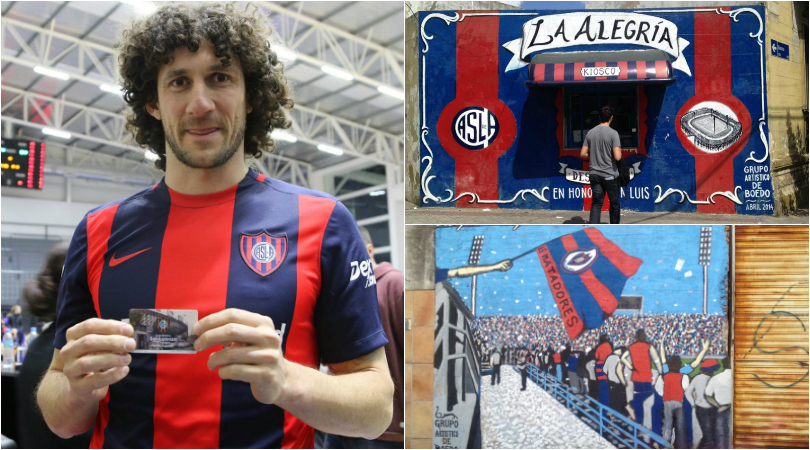
Despite being part of the Newcastle United furniture for eight years, a lifetime in the turbulent world of the Magpies, Fabricio Coloccini bade farewell to English football with little fanfare this summer. But over in Buenos Aires, his arrival at the club of which he is a passionate supporter was very different.
The press conference announcing the return of ‘Colocha’ to San Lorenzo after 16 years said everything about a club that boasts a unique story. It's one that began in the 1970s, when Argentina’s military dictatorship drove the club out of its neighbourhood of Boedo, and continues today with its remarkable fans buying back the stolen turf, metre by metre, to get the club back home.
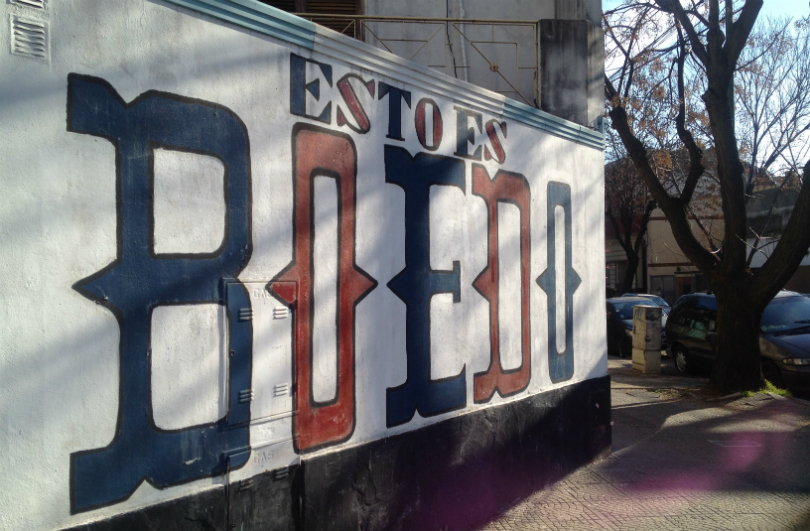
Evoking more than a little of the club’s folkloric struggle, Coloccini's unveiling was true to the script of long-awaited homecomings. Significantly, the press conference took place in the club’s brand new basketball arena in Boedo; a construction that will enable a San Lorenzo sports team to play in its true home for the first time in 37 years. “I think it’s a beautiful idea that this presentation should take place in Boedo, for everything that it means,” said Coloccini.
The curly-haired defender has fought for a return to San Lorenzo on numerous occasion in his career, and the realisation of his own dream provided a fitting metaphor for club's struggles. “This day had to come,” he said. “The return to my beloved San Lorenzo de Almagro, my home.”
Acá están los refuerzos de #SanLorenzo para buscar Torneo, Copa Argentina y #Sudamericana: Coloccini, Costa y Corujo pic.twitter.com/vmCwJEG1bp
— La Comu Cuerva (@comunidadcuerva) July 25, 2016
Proving his credentials as a true Cuervo (a San Lorenzo supporter), Coloccini proudly brandished his socio refundador card at the end of the press conference – a card given to everyone who buys a symbolic squared metre of the sacred land in Boedo. With each of the 35,600 square metre plots costing around £130, the money raised will finally dislodge the site’s current occupants, French supermarket chain Carrefour, and make way for the building of a new stadium known as the Estadio Papa Francisco – named after the Pope, himself a bona fide Cuervo.
Get FourFourTwo Newsletter
The best features, fun and footballing quizzes, straight to your inbox every week.
The club may have coordinated the agreement with Carrefour last year, but this fundraising project and the years of struggle preceding it belong to the ingenious, indefatigable San Lorenzo supporters. Confronted with trickery from Argentine governments, stubbornness from a multi-national retail giant, and incompetence from previous owners, Cuervo resolve has taken the club to the brink of an historic return home. This story is closer than it’s ever been to a happy ending.
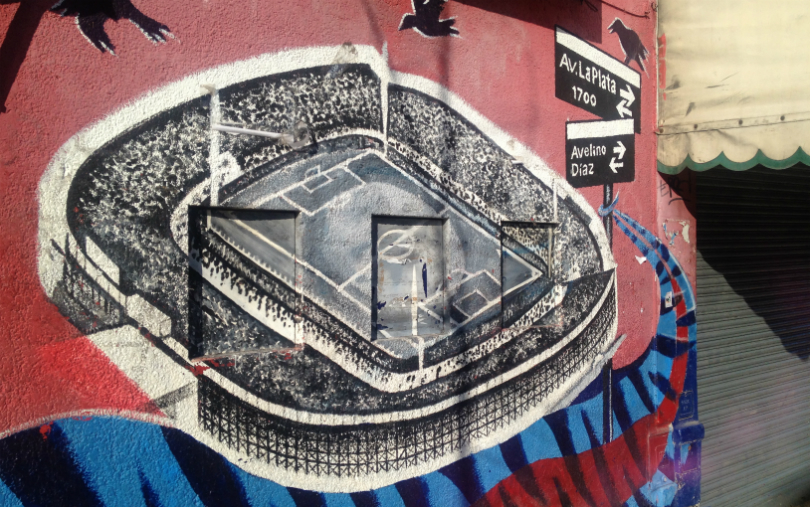
Thirty-seven years and counting
The barrio of Boedo had been stripped of its famous sporting arena and primary social hub, while San Lorenzo, one of South America’s oldest and most well-supported clubs, were homeless
It’s been a long time coming. The last game in Boedo was played against Boca Juniors back in 1979. The emotion pouring down from the old wooden terraces seemed to overwhelm the players who could only manage a 0-0 draw to mark the closure of the Viejo Gasometro – known as ‘el Wembley porteño’, the Wembley of Buenos Aires, for its vast open structure and tradition of hosting the Argentine national side. The demise of one of Argentina’s most iconic sporting venues is hotly disputed, and many Cuervos see their club as another victim of the military dictatorship that ruled the country in devastating fashion from 1976 to 1983.
When the junta’s ‘National Reorganisation Process’ clicked into gear in the 1970s, San Lorenzo and the Gasometro were vulnerable. The club faced spiralling debts and the stadium was in a state of disrepair. Spotting an opportunity, the government started to pressure the club into selling the stadium, claiming the site in Boedo would be better used for the construction of new highways linking the barrio with rest of the city. It’s reported that members of the San Lorenzo board were threatened into complying with the sale.
Sure enough, the cash-strapped club sold the property to the city government for $900,000. Five years later, having failed to deliver new highways or any notable regeneration of the area, the government sold the land on to French retailer Carrefour for nine times the original price. The club didn’t see a peso of the profit. The barrio of Boedo had been stripped of its famous sporting arena and primary social hub, while San Lorenzo, one of South America’s oldest and most well-supported clubs, were homeless.
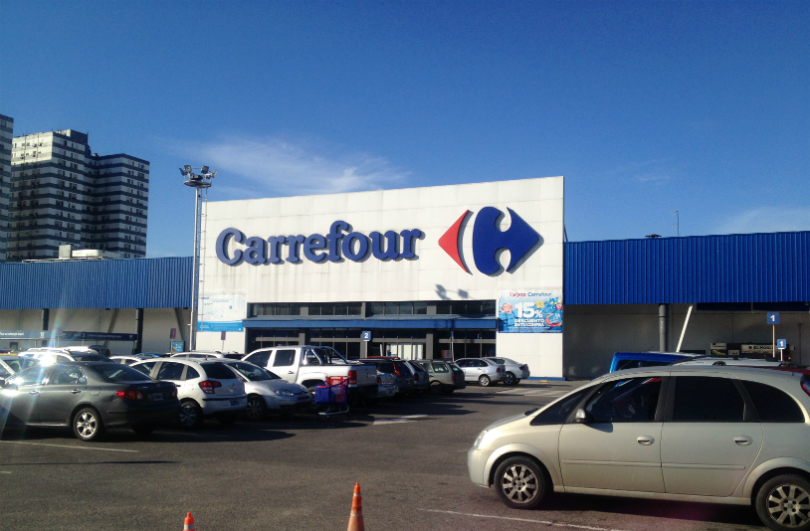
Subsequently forced to play ‘home’ fixtures in the stadiums of rival clubs like Boca, Huracan and Velez Sarsfield, the fans were left humiliated. In 1981, insult was added to injury when San Lorenzo became the first of Argentina’s cinco grandes (‘big five’) to be relegated to the second tier. The club could have slipped into obscurity at this point, but instead, an amazing resilience among its support emerged, setting the tone for the remarkable campaigns that run into the present day.
The return
When many fans would have deserted their beleaguered team, Cuervos seemed to multiply, packing out stadium after stadium in a nomadic dominance of Buenos Aires. In 1982, a staggering 75,000 San Lorenzo fans piled in to River Plate’s Monumental for the visit of unfashionable Tigre, audaciously breaking River’s own record attendance in the famous old stadium.
San Lorenzo - Tigre. 13 de marzo de 1982. Sexta fecha. Torneo Nacional B. Así lucía el Monumental. pic.twitter.com/a1y3LeFnlX
— ⭐Cuervo⭐ (@leoneel_casla) March 14, 2016
An everyday second division league fixture had been transformed into a fiesta so intense it was scarcely believable. This fervent support helped carry their club to promotion at the first attempt, and more importantly, demonstrated the way this community from Boedo could unite in the face of adversity.
Fast forward just over a decade and San Lorenzo finally had a place they could call home – even if it wasn’t in their home. The Nuevo Gasometro was erected in nearby Bajo Flores in 1993 and has hosted historic moments for the club, not least its long-awaited Copa Libertadores win in 2014. But the stadium lies in one of Buenos Aires’ most dangerous areas and many Cuervos are put off the trek south of Boedo.
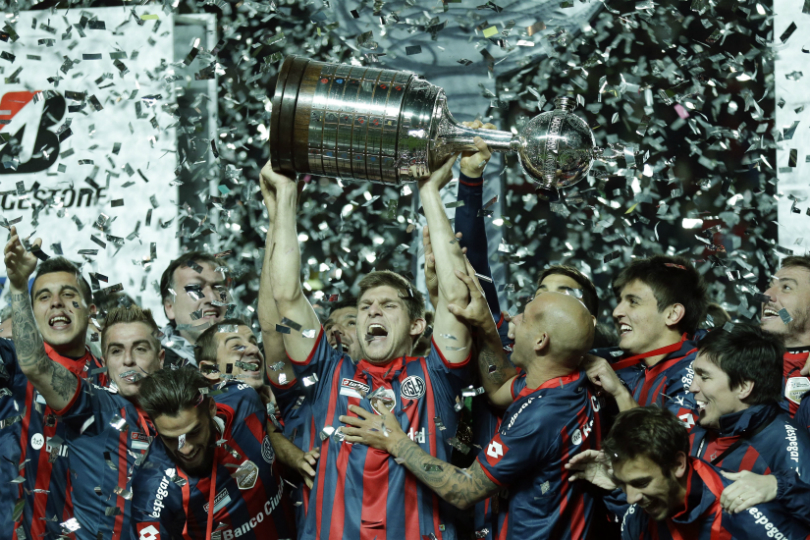
- READ FFT’s 50 Best Managers in the World 2016: Edgardo Bauza, the man who led San Lorenzo to the 2014 Copa Libertadores
In between the stands of the Nuevo Gasometro you can see the sprawling, favela-style Villa 1-11-14 neighbourhood where gun crime and drug abuse is rife. Such was the amount of robberies taking place among San Lorenzo fans leaving the stadium last season, the club requested all home fixtures be brought forward from evening to afternoon, hoping that daylight could begin to mitigate some of the danger around the ground.
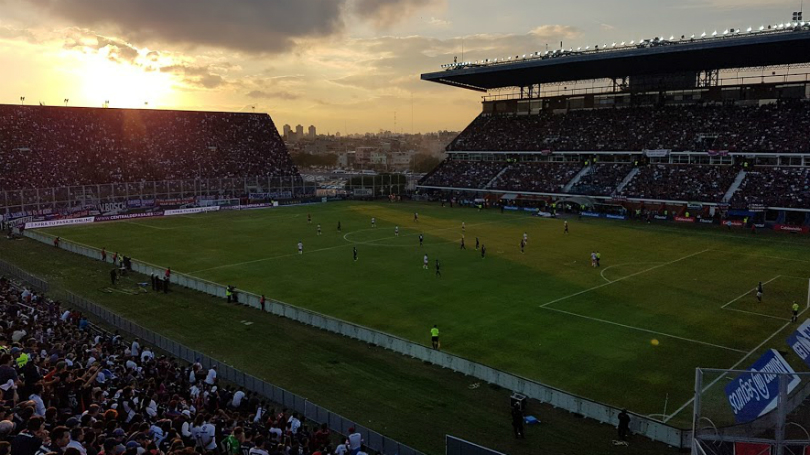
There are other signs that the time has come to move out. Large fractures were recently found on a supporting pillar of the main home end of the Nuevo Gasometro, forcing the closure of the stand and a reduced capacity for the final home fixture of the season. It only takes a few minutes of footage to appreciate the strain the terrace comes under from 20,000 bouncing Cuervos every other week and surmise that a rock-solid, modern stadium is needed to support these delirious hordes.
The streets of Boedo feel like they’re waiting for the fans to come back too. Bajo Flores may house the current stadium but it’s Boedo where you sense the presence of San Lorenzo, thanks in no small part to the myriad murals adorning houses, walls and shops, expertly painted by the Grupo Artistico de Boedo. This Cuervo collective of artists has been paying homage to club through its paintings since 2012, and believes the art has aided the fans’ struggle to achieve La Vuelta. “It’s helped restore culture to the area,” group founder Facundo Gonzalez tells FourFourTwo, “and it’s also paved the way for San Lorenzo to return home.”
Home straight
Thanks to the club’s Subcomision del Hincha, sub-committee of fans, Gonzalo and his fellow Cuervos can now talk of the return with more conviction than ever before. Teeing up the square metre fundraising project was a remarkable legislative triumph in the courts, as the committee successfully campaigned for the Law of Historical Restitution in 2011, affording San Lorenzo the legal rights to the land in Boedo. Amid the campaign came another historic mobilisation of supporters, as 110,000 Cuervos descended on the presidential square in Buenos Aires to call for the right to return. The fans had turned a local, barrio struggle into a national cause.
With a legal battle won, it was time to take on the financial hurdle; no easy task in a cash-strapped country. But if the adage tells us ‘where there’s a will, there’s a way’, the will among San Lorenzo supporters is more than enough to raise the cash. The Subcomision works relentlessly to gather donations, and the fans keep giving what money they have. When it comes to restoring the identity of their club, it seems no price is too high for Cuervos.
The admirable fundraising effort was rewarded on the December 23, 2015, when Carrefour accepted an offer of 150 million Argentine pesos (around £7.7 million) for 75% of the land where the Gasometro once stood, enabling the construction of the stadium alongside a scaled-down supermarket in one corner. Cuervos flooded the streets of Boedo to celebrate their early Christmas present while the club’s owners addressed a jubilant terrace of supporters in the Nuevo Gasometro to confirm the news.
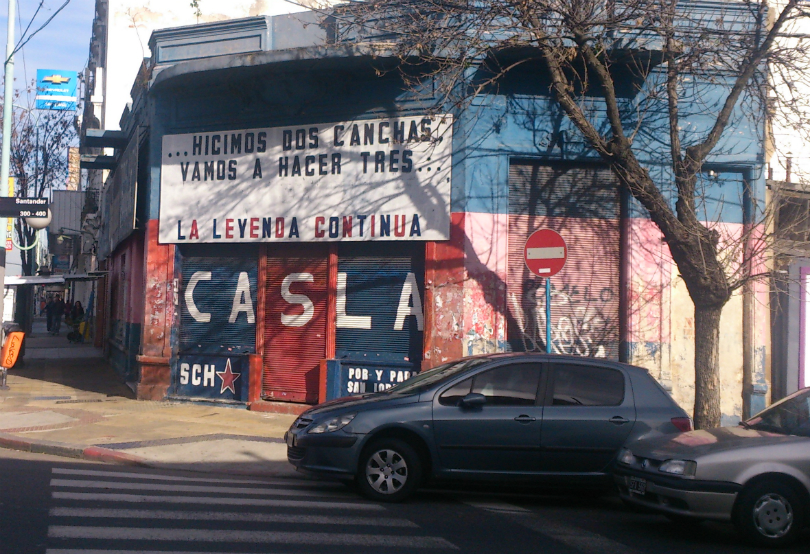
Mathias Lammens could go down in history as the president who finally took San Lorenzo back home, but he was quick to acknowledge where the credit was due. “I thank all of the fans. We have already completed payments for 65 million pesos. Now there are no excuses for not contributing more square metres.”
Coloccini alone has hoovered up 60 square metres and perhaps his support of the campaign will help invigorate the final push among fellow supporters to get the club home. With the Premier League now behind him, ‘Colocha’ has left a footballing world where fans have never felt more impotent in their clubs, and so distant from their players. He re-enters one where supporters are orchestrating a club’s destiny, and where he is simply another Cuervo, playing his part in one of football’s greatest stories of fan power.
